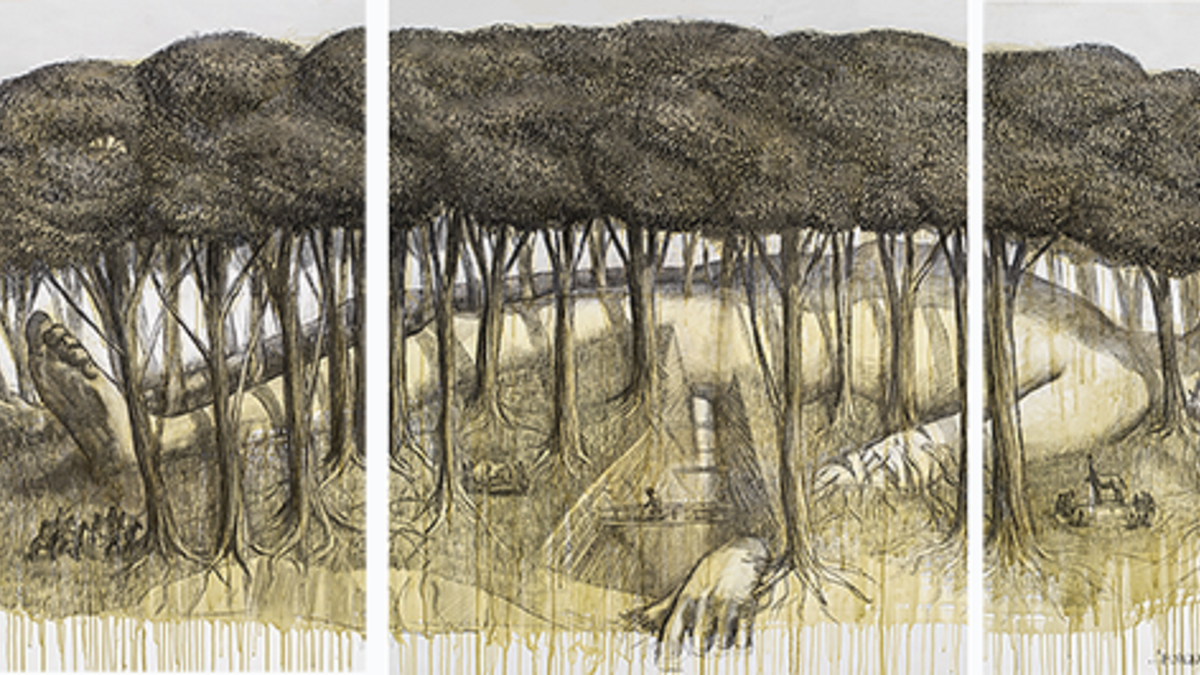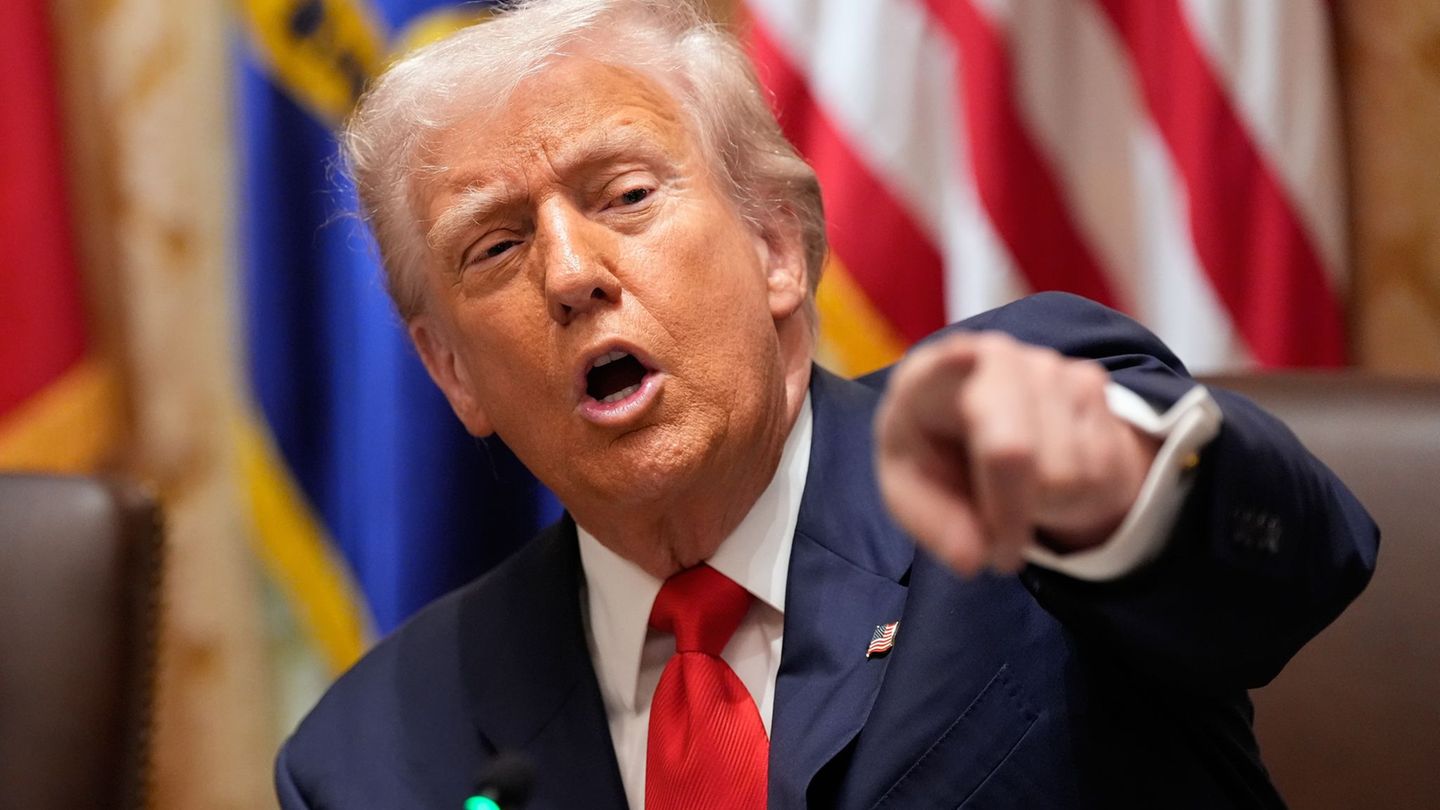In the Art Space of the OSDE Foundation the Alberto J. Trabucco Drawing Award, dependent on the National Academy of Fine Arts. The jury, made up of academics, awards the only Acquisition Award that is donated to a national, provincial or municipal museum in our country.
Ten were chosen who demonstrate “a level of excellence, they reveal a technical, formal and conceptual process inherent to every work of contemporary art”: this is what he pointed out José Alberto Marchiprominent artist, President of the Trabucco Foundation.
Among the artists invited is Amadeo Azar (Mar del Plata, 1972) who defines his work as “visual essays”. It includes the Pampas landscape, history and artistic avant-garde.
Lucas Bragagnini (Rosario, 1984), photographs and draws architectural and monumental remains that we do not know if they exist or existed, a surreal climate, architectures that have perhaps fallen into disuse to give way to transformations that modify the habitat of cities, transforming them into impersonal ones.
Cristina Coll (1956), interdisciplinary visual artist: her work ranges from painting, drawing, action, photography to video performance. She investigates sexual and gender identity. Her tempera drawings reveal a sample of characters of diverse physiques and there is even a portrait of Manuel Belgrano in an irreverent tone, with writings calling him “cotorrita”, due to his usual green clothes and his reedy voice.
Alicia Esquivel, born in El Dorado (Misiones), studied at the Pueyrredón and De la Cárcova Schools, lived in Italy between 1986 and 2004 where she studied restoration. She uses “silver point” for her wandering animals that have been saved from fires or some other devastation, a work that she dramatically titles “And it doesn’t end when the fire goes out.”
Ana Gallardo (Rosario, 1958) is an artist with a very distinguished career who currently lives in Mexico. As we have seen lately, both in Fundación Proa and in the Museo Moderno, it presents large black fabrics with some phrase at the bottom, painted in red or embroidered with silver thread, bloody phrases, for example: “My mother was killed by a hitman,” a laconic but forceful phrase that expresses one of the many contemporary scourges.
Sandra Sarrúa faces the landscape in a tight and variegated group of grasslands and Martín Kovensky presents, among his works, “The analog drawing workshop on Newbery Street”, graphite and charcoal with some golden sparkles, in a display of horror vacui with which he fills the plane of the paper.
Huenu Peña (Córdoba, 1988) appeals to the digital to elucidate Shakespearean literary texts with lines and mathematical calculations, a kind of visual poetry with important references in our country such as Claudio Mangifesta, Luis Pazos, Eduardo A. Vigo, among others, who also ventured into the sound
Cynthia Kampelmacher presents ten modules in graphite, watercolor and colored pencil, titled “Herbarium”. We remember your participation in Trabucco 2018. A forest that is interrupted by other visual strategies. that removed it from the conventional representation. a much more elaborate and disturbing work.
The Acquisition Prize was awarded to Daniel Santoro (Buenos Aires, 1954), multidisciplinary artist, painter, draftsman, author of artist books, objects and installations.whose work is compiled in a famous book that covers the period 1998-2006 “Mundo Peronista” which is not, as we always think, a visual and textual panegyric, which contains its bright sides and its darkness.
The texts belong to Daniel Santoro, Norberto Griffa, Raúl Santana, Fabián Lebenglik, Alberto Petrina. A traveler, he visited remote places, learned oriental writing and the Chinese language, as well as Sanskrit and Hebrew, and studied Kabbalah. Artist of great culture, of lush imagination, devoted admirer of the German poet and philosopher Friedrich Hölderlin when he refers to the lost homeland “no matter how hard you search, you will never find it again: take comfort in seeing it in your dreams.”
The winning work, “Stone, flesh, wood”, earth powder, and charcoal, an extraordinary figurative drawing of a recumbent body, perhaps sacred, found in a forest with the skill that characterizes it also appeals to Hölderlin “because the gods can do anything; “Humans reach the abyss first.”
A preview of this drawing was seen in “Theater of memory”a panorama, exhibition held at the National Museum of Fine Arts in 2023.
(Espacio de Arte- Osde Foundation: Arroyo 807. Monday to Friday from 12 to 8 p.m. Closing on August 16.)
Source: Ambito
I am an author and journalist who has worked in the entertainment industry for over a decade. I currently work as a news editor at a major news website, and my focus is on covering the latest trends in entertainment. I also write occasional pieces for other outlets, and have authored two books about the entertainment industry.




